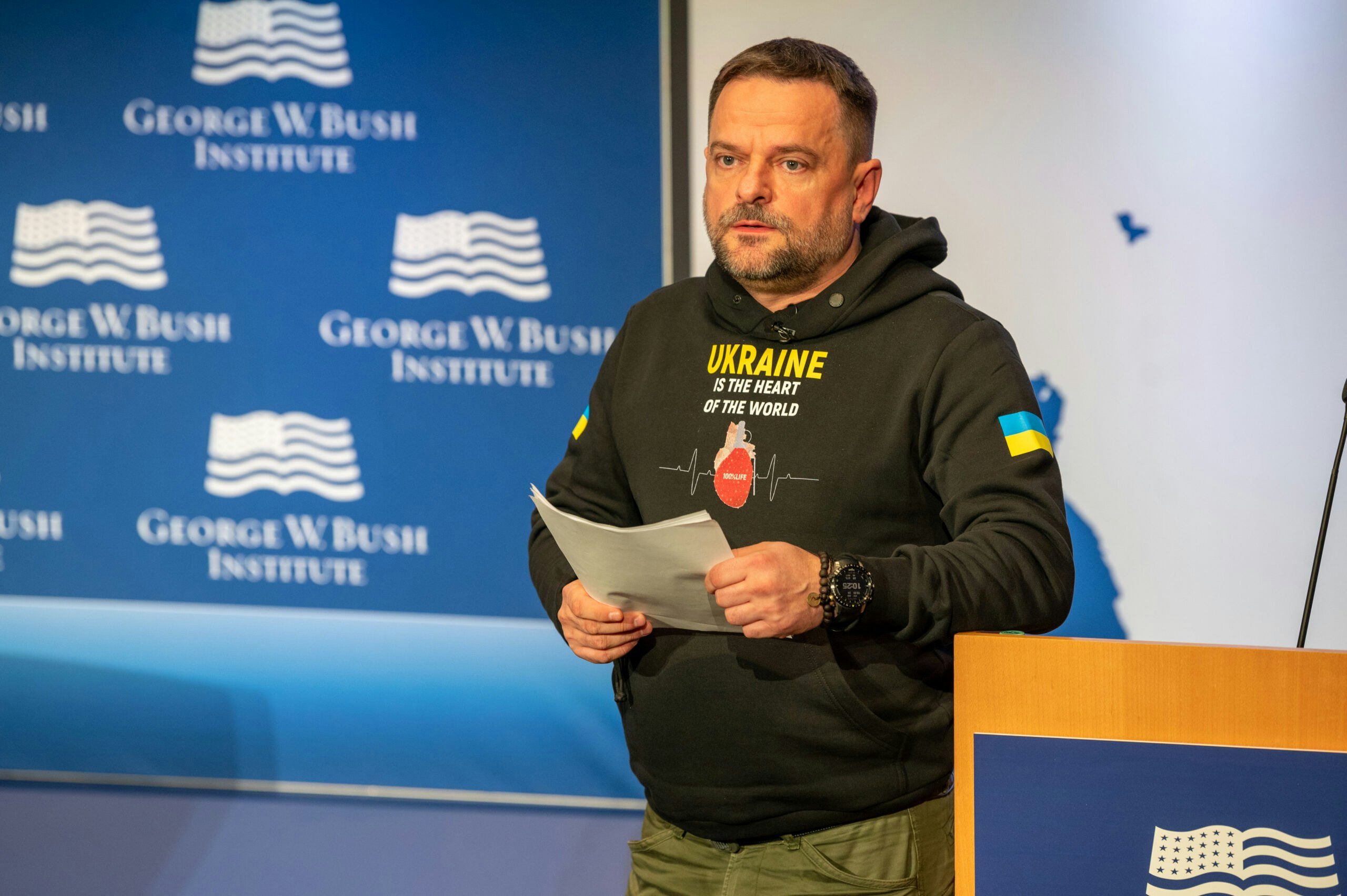Just as important as lives saved is how confident Americans should feel about how effectively their taxpayer dollars are being used under PEPFAR. It’s important for the U.S. government to model that it can run a highly effective, results-oriented program, and PEPFAR is proof of that.
Several weeks ago, I had the opportunity to travel with President and Mrs. Bush to Botswana and Namibia as we saw firsthand the work of the Bush Institute’s global health initiative on the ground. What we saw was progress on our initiative to combat cervical and breast cancer — Pink Ribbon Red Ribbon — and the continued work that is occurring on HIV/AIDS prevention and treatment. But we also saw evidence of a broader effect where foreign assistance helps to play a role in lasting peace and security in a region of the world where this is vitally important. This is often an unrealized and undiscussed long-term impact that bears remembering in the current political environment.
The progress we saw on the ground on the President’s Emergency Plan for AIDS Relief, or PEPFAR, is remarkable. Before PEPFAR was launched by President Bush and passed by Congress in 2003, only 50,000 people were on antiretroviral drugs on the continent of Africa. Today that number has reached almost 12 million. In addition, nearly two million children have been born HIV-free to women living with HIV due to the program’s efforts to reduce the mother-to-child transmission of HIV.
We saw this lifesaving work firsthand when we visited Windhoek Central Hospital in Namibia. Along with President and Mrs. Bush, we visited a maternity ward, where approximately 25 new mothers had gathered with their babies. All of those mothers have HIV but are successfully being treated — and all of their children are HIV-free. Meeting those mothers and their children is a powerful testament to what can be achieved.
Just as important as lives saved is how confident Americans should feel about how effectively their taxpayer dollars are being used under PEPFAR. It’s important for the U.S. government to model that it can run a highly effective, results-oriented program, and PEPFAR is proof of that. Data is being strategically used to drive decision-making and implementation and to ensure that resources flow to the sites where the burden of HIV is highest and can have the most effect.
Data also shows that there is more work to be done. While HIV incidence rates have decreased in the over-30 year old population, a growing youth bulge of 15-24 year-olds proves that our work is not yet done. As this group grows and enters the period of time when they are significantly at risk for HIV infection, it is important that we continue building on the progress we have seen and target services to this age group.
Building on the work of PEPFAR, almost six years ago the Bush Institute launched Pink Ribbon Red Ribbon to be a catalyst for combatting cervical and breast cancer in sub-Saharan Africa. This initiative was based on the knowledge that women who are now living with HIV are five times more likely to develop cervical cancer. Since that time, we have worked with five countries to screen nearly 400,000 women for cervical cancer and 25,000 women for breast cancer, and 120,000 girls have been vaccinated against HPV.
At the Therisanyo Primary School in Gaborone, Botswana, we talked with girls who had received the HPV vaccination and their mothers who shared their thoughts on the importance of cervical cancer prevention and this vaccination. Botswana has made significant progress on the HPV vaccination; 64 percent of the total population of 9-13 year-old girls have been vaccinated, and the government uses its own funding for this program, leading to long-term sustainability in that country. But for all of this progress, we are still in the early phases and can do much more to focus on prevention by significantly increasing vaccination coverage across sub-Saharan Africa.
Both Botswana and Namibia are known to be democratic and free of corruption. That was true long before PEPFAR and other global health efforts began working with these governments, but both of these countries are now seeing that a focus on a healthy, stable population continues that stability. When children are no longer orphaned because their parents are dying of AIDS and the country’s healthy workforce can continue to grow the economy, these countries will only continue to be examples for how democracy, good governance, and a focus on healthy citizens leads to long-term peace and stability in this part of the world.



























